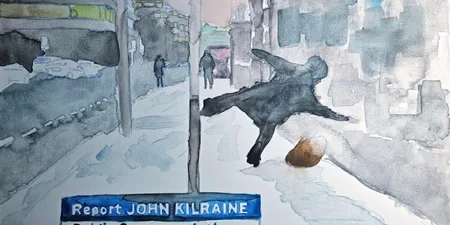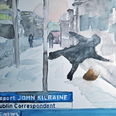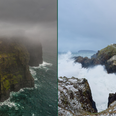Met Eireann has added information about a Sudden Stratospheric Warming for Ireland in its Meteorologist’s Commentary.
The information includes the effects of the warming for Ireland and when we will start to see it really kick into play.
The information was issued by Meteorologist Liz Walsh on Thursday 10th January 2019.
What is Sudden Stratospheric Warming?
“The earth’s atmosphere is comprised of layers based on temperature. We live in the lowest part of the atmosphere – the troposphere – which contains most of our weather – clouds and precipitation – and on average it’s about 10 km deep, although the depth does vary from the equator to the poles – greater at the equator, lesser at the poles.
The Jet Stream is at the top of the troposphere and most of our weather happens below that.
Above the troposphere is the stratosphere and this layer of the atmosphere extends upwards to about 50km. It contains much of the ozone in the atmosphere which absorbs all the ultra violet rays from the sun causing it to warm up.
Temperatures in the stratosphere are generally highest over the Summer Pole where the sun shines all day and night and, conversely, lowest over the Winter Pole. So in winter the stratosphere is usually very cold at the pole and this is what the Stratospheric Polar Vortex is: a pool of very cold air associated with low pressure 10 to 50 km above the Winter Pole.
Around this pool of cold air we get some very strong westerly winds propagating around it – a stratospheric jet stream – high up above our own tropospheric jet stream – which helps to keep the Polar Vortex intact above the pole.
Westerly winds are of course associated with the anti-clockwise movement of air in low pressure systems in the northern hemisphere.
However, the Polar Vortex can sometimes be affected by natural weather systems or disturbances in the lower part of the atmosphere which can weaken the stratospheric jet stream.
This then causes the air in the stratosphere to compress leading to a rapid temperature increase. In turn the Polar Vortex breaks down or becomes displaced from the pole and we get what is referred to as a Sudden Stratospheric Warming event or SSW. SSWs are subject to categorization: Major, Minor and Final.
A major SSW event is when the observed stratospheric temperatures rise rapidly over the course of a few days and instead of a pool of cold air associated with low pressure over the pole (a polar vortex) we get an area of high pressure, associated with the rapid rise in temperature.
As a result, the stratospheric westerly winds change direction to easterly which is associated with the clockwise movement of air in high pressure systems in the northern hemisphere.”
Why are SSWs significant for our weather?
“Normally, the air flow in the stratosphere during winter is westerly, moving around from west and east because we have low pressure at the pole. This enhances the Jet Stream lower down in the troposphere.
Typically we tend to get reasonably strong Jet Streams propagating around the winter hemisphere anyway because of the surface temperature difference from equator to pole during winter.
But when the Polar Vortex is present in the Stratosphere it helps to strengthen the Jet Stream, which is what drives low pressure systems and winter storms from the Atlantic towards our area.
When the Polar Vortex breaks down or gets displaced from the pole, that helping hand is no longer there and so the Jet Stream lower down in the troposphere can and does weaken. The tropospheric jet also gets pushed further south leading to the development of high pressure systems at higher latitudes. The easterly winds in the stratosphere effectively sink down into the troposphere, altering the weather patterns in the northern hemisphere.
It’s important to note that an SSW doesn’t necessarily mean we’re going to get continuous cold weather for the rest of the winter. What it does mean is that there is a greater chance of an easterly flow type set up which could bring episodes of colder weather depending on the synoptic set-up.
Information on Sudden Stratospheric Warming has been added to our Meteorologist’s Commentary. Including what will the effects be for Ireland & when will we start to see them?https://t.co/WpAXdo1OTE
Below Left: Stratospheric temp Nov 2018
Below Right: Stratospheric temp Jan 2019 pic.twitter.com/ddl46YjBp9— Met Éireann (@MetEireann) January 11, 2019
Has a major SSW occurred this winter?
In short yes. It peaked at the beginning of January 2019.
What are the effects and when will we start to see them?
“It takes a long time for the easterly winds to filter down into the part of the atmosphere where we live – generally a number weeks at least. The Sudden Stratospheric Warming (SSW) event which occurred at the start of January is expected to impact tropospheric conditions towards the end of January.
“If the resulting high pressure systems become established over Scandinavia or Greenland, such a synoptic pattern could lead to bitterly cold air from eastern Europe/Russia pushing in over Ireland, as happened in late February/March of last year (2018).
“It is important to note that this kind-of set-up can just be the result of normal weather variability, but the main point is that a major SSW can enhance the likelihood of occurrence.
“At the moment, our weather is expected to be either milder than or near average out to the next 7 to 10 days, with an Atlantic regime gradually returning as high pressure slips away to the southwest.
“With the exception of mountaintops, snow is therefore unlikely over the next 7 to 10 day period. As we approach the end of January, though, the guidance suggests an increased risk of colder than average weather with frost and ice likely to be more prevalent than of late. Whether we will get the synoptic set-up which could result in snowfall remains highly uncertain. But as always, we’ll keep you posted.”
READ NEXT:This Car Was Clamped After Making a Very Simple Mistake
Topics:
RELATED ARTICLES
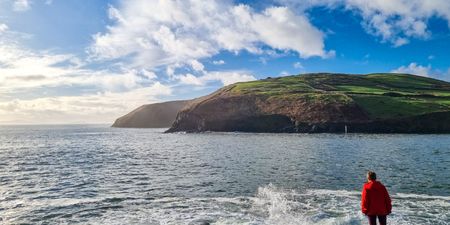





MORE FROM Lovin




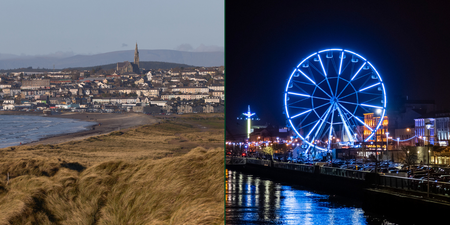



















MORE FROM Lovin








